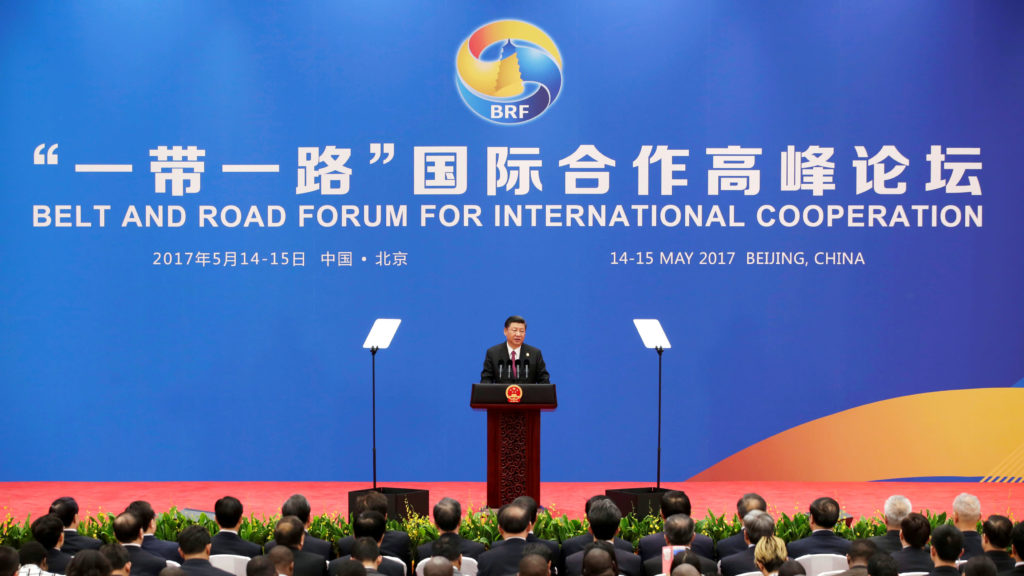Editor’s Note: Earlier this year, OrgUp editors Calvin Cheung-Miaw and Max Elbaum published an article at In These Times on U.S.-China relations. In it, Cheung-Miaw and Elbaum outlined their case for the left to prioritize the fight for a 180-degree turnaround in the U.S. stance toward China, demanding that diplomacy and negotiation replace trade wars and military encirclement. We invited several thinkers and activists to respond to our piece and provide their own take on the path forward. Ho-fung Hung’s important contribution is below, stay tuned for more.
China’s economic boom, from the 1990’s all the way to the 2000’s, was based on China’s willingness to be a cooperative partner of the U.S. in the project of globalization. Wall Street, U.S. capital more generally, and the Jiang Zemin government made a deal in the 1990s. At the time of the State Owned Enterprise reforms in China, Wall Street firms were involved in the process of auditing companies and in privatization, eventually helping to throw many onto the New York and Hong Kong Stock exchanges. U.S. capital gained a lot of benefits from China’s privatization and marketization process and at the same time the U.S. was opened up to China’s exports. The U.S., in turn, helped China enter the WTO. This was a symbiotic relationship between U.S. and China in making the global economic order.
In 2008, after the global economic crisis, something changed in the thinking of Chinese leaders. I vividly remember talking to Chinese intellectuals saying that the Wall Street collapse was the last straw that would break the back of U.S.-led global capitalism. They predicted that U.S. leadership in the world was going to be over. In 2008 and 2009 there was a lot of talk about how the U.S. dollar was not going to be globally hegemonic anymore and how the US economy would not fully recover from the crisis. The U.S. economy was dependent on Chinese-held Treasury bonds to stay afloat. The mood was: the day of U.S. dominance is over.
At the same time, China rolled out a successful economic stimulus. The government lent money through state banks to build high-speed rail, steel mills, and other infrastructure projects. China pulled off the floor of the global economic crisis and became the major engine of the global economy. By 2010 many commodity-exporting countries, like Brazil, avoided the worst of the crisis because of their exports to China market. This situation also contributed to many in the Chinese leadership thinking that it was time for China to take the helm of the global economy and get rid of dependence on the U.S., because the dollar’s standing as the global currency was over. From 2010 on, the Chinese state became more and more assertive on multiple fronts. In the domestic economy, the Chinese government became more aggressive in helping China’s State Owned Enterprises and marginalizing foreign enterprises in China. This generated complaints from the U.S. under Obama, and from Germany and other countries, that foreign companies were being treated unfairly in the Chinese economy.
China also became aggressive in exporting capital to Africa, Latin America, Central and South Asia, and the Middle East. This investment crowded out Western investment to some extent. China was also becoming aggressive geopolitically, particularly regarding the South China Sea, Taiwan, and other regional issues. It was at this time, when China stopped cooperating with the U.S. global agenda, that U.S. elites started to feel pressure from China on the global stage.
My assessment is that China’s turn to a more aggressive stance economically and politically was founded on an incorrect judgment about its own strength and U.S. weakness. From the perspective of Wall Street, the U.S. economy has recovered. The dollar is stronger than before the recession. At the end of the day, China will not be able to really take on the U.S. In the end there are two scenarios more likely than China replacing the U.S. in the world order. One likely scenario is that China succeeds in expanding its sphere of influence in Asia and the immediate neighborhood. In that situation, the U.S. and China will have a new balance of power. China will expand its power compared to its reach 20 years ago, but the U.S. will contain its influence from expanding further, and this will create a new kind of understanding. Another possibility is that China will keep becoming more and more aggressive and this will lead to some kind of skirmish. In such a case, the U.S. will probably be able to maintain its military supremacy and the situation will become fluid. For instance, in China Xi Jinping is in control right now, but there are hidden complaints and grievances among the elites. If there is a military confrontation with the U.S. that doesn’t end well for China, Xi Jinping will be challenged. If he’s risk-taking enough, there’s a chance of chaotic conflict. Xi Jinping could also be rational and recognize that China is not able to take on U.S. militarily, so he may try to strike deal with the U.S. on trade and become more cooperative again.
In any case, we are in a similar situation to the one that faced the left in the early 20th century, when Lenin spoke about intensifying inter-imperial rivalry. It didn’t end very well then. Right now, China is not shy about challenging U.S. on many fronts, but we must think about not only China but also Russia. Russia is weaker economically than China, but it is more experienced in the arena of geopolitics, as you can see with Russian intervention in Syria, Venezulea, and Ukraine. Each move is an attempt to expand the Russian sphere of influence at the expense of the U.S.
There are two paths the U.S. working class can take. Some activists have been spending a lot of time building solidarity with the Chinese working class and arguing that we must improve the welfare of the U.S. working class by improving the conditions of the Chinese working class. You see a similar thing happening with attitudes about the Mexican working class, in debates over NAFTA and the U.S.-Mexico-Canada free trade agreement. The agreement has some provisions that are favorable to working class solidarity, even though it comes from a protectionist position. There are minimum wage standards, and there are environmental standards for production in order for exports to benefit from low tariff access to each other’s market. The same kind of thing can be part of the U.S. China trade agreement. Right now the negotiations are mostly about intellectual property rights and items that favor U.S. capital. The U.S. working class can demand labor standards and environmental standards in any eventual trade agreement.
The other path, which seems to be more mainstream right now, is the protectionist approach. When Trump canceled the TPP, many Democratic politicians on the left were actually supportive, and we saw the same thing regarding Trump starting a trade war with China. If you look at debates in the 1990’s about whether or not to give China Most Favored Nation status in order for China to export to the U.S. with low tariffs, you’ll see that the mainstream Democrats and Republicans supported it, but Sanders was vehemently against it. He said that it killed American jobs and destroyed American industries and communities. There is a strong mainstream argument right now that U.S. industry, jobs, lives, and work need to be protected by giving a halt to free trade with China.
So we see two wings of labor movement, one is more internationalist and one is more protectionist. How it will unfold is difficult to predict.
Looking at the geopolitical situation, we should assert that nobody wants war and military conflict. The de-escalation of rivalry is important. But just like in the run-up to 2nd world war, the international communist movement and working class movement faced a dilemma, and made a decision to side with liberal empires against fascist regimes. So there’s something here that the U.S. left needs to think about. If there is a rupture between the U.S. and China over Taiwan, the South China Sea, or another place, China is a dictatorship now with tight control over its working class and citizens. The Chinese government is going after labor NGOs and grassroots organizing, while the U.S. is a liberal power. We need to bear in mind the nature of the Chinese regime and factor into our consideration the issues of rights: economic, social, and political rights. How should we position ourselves? Obviously it depends on how the rivalry erupts and what issues are at stake, but we need to bear one thing in mind: the worst thing progressive circles could do is to provide apologetics for a draconian repressive regime in China. While pursuing peace and deescalation, we can’t become apologists for authoritarianism.

